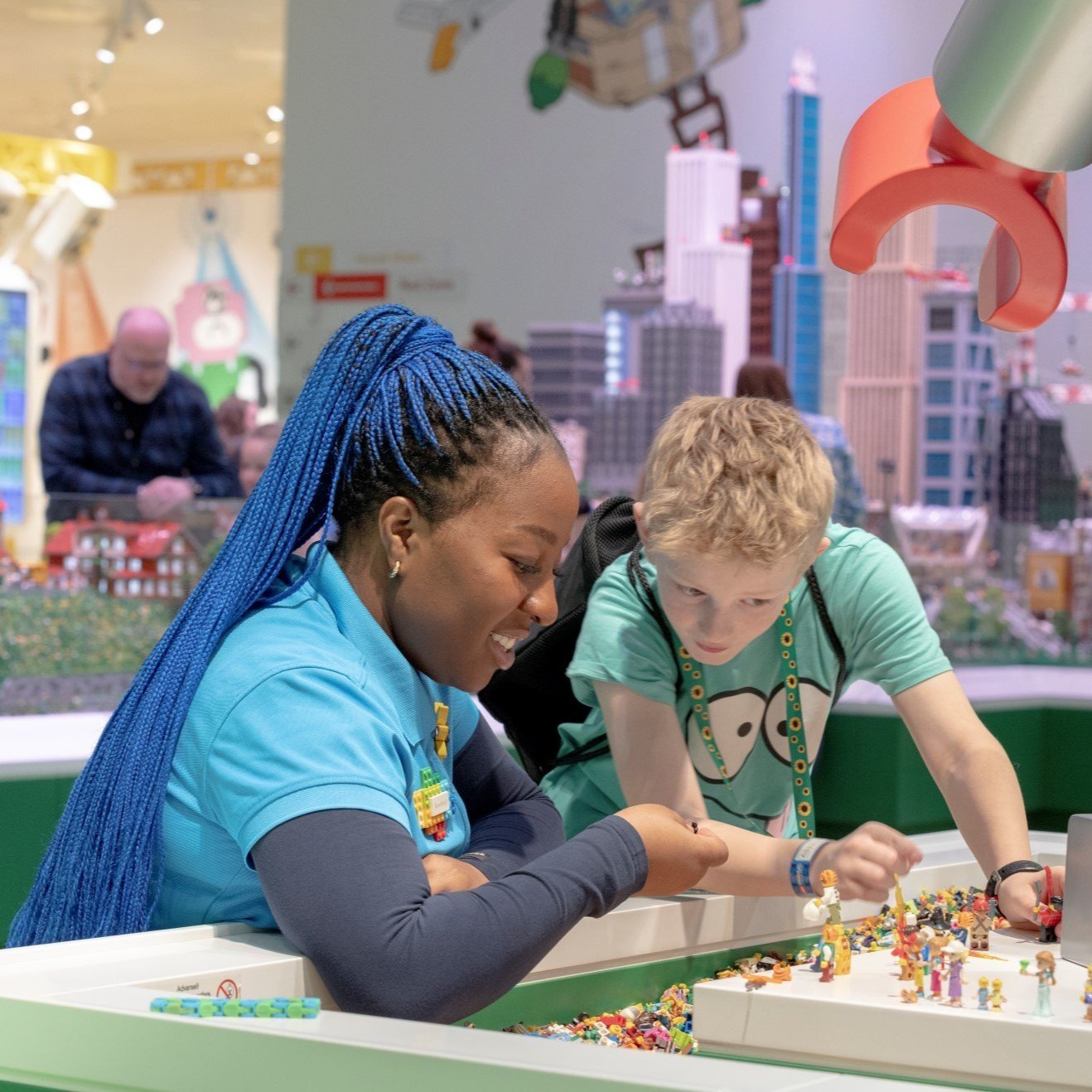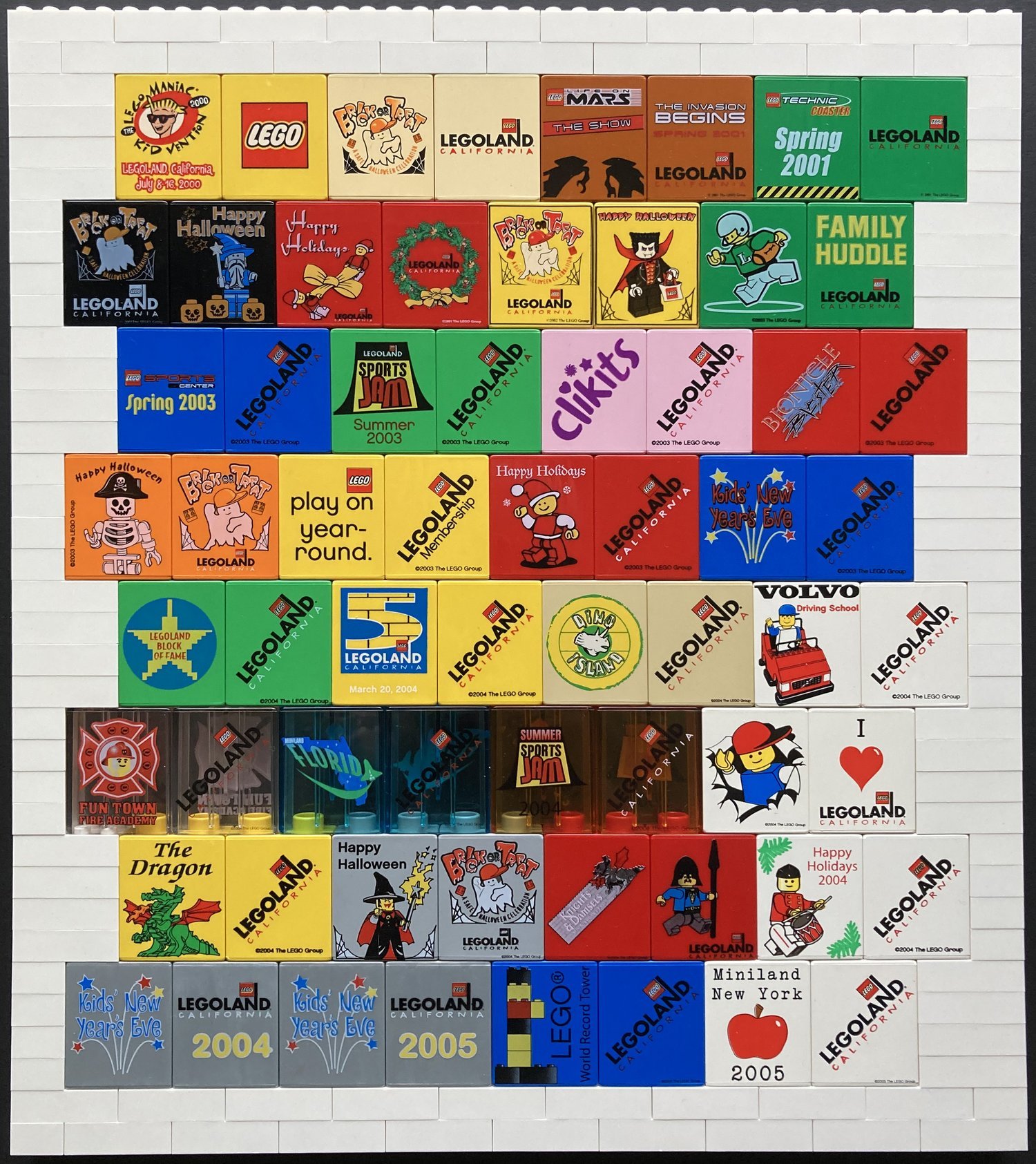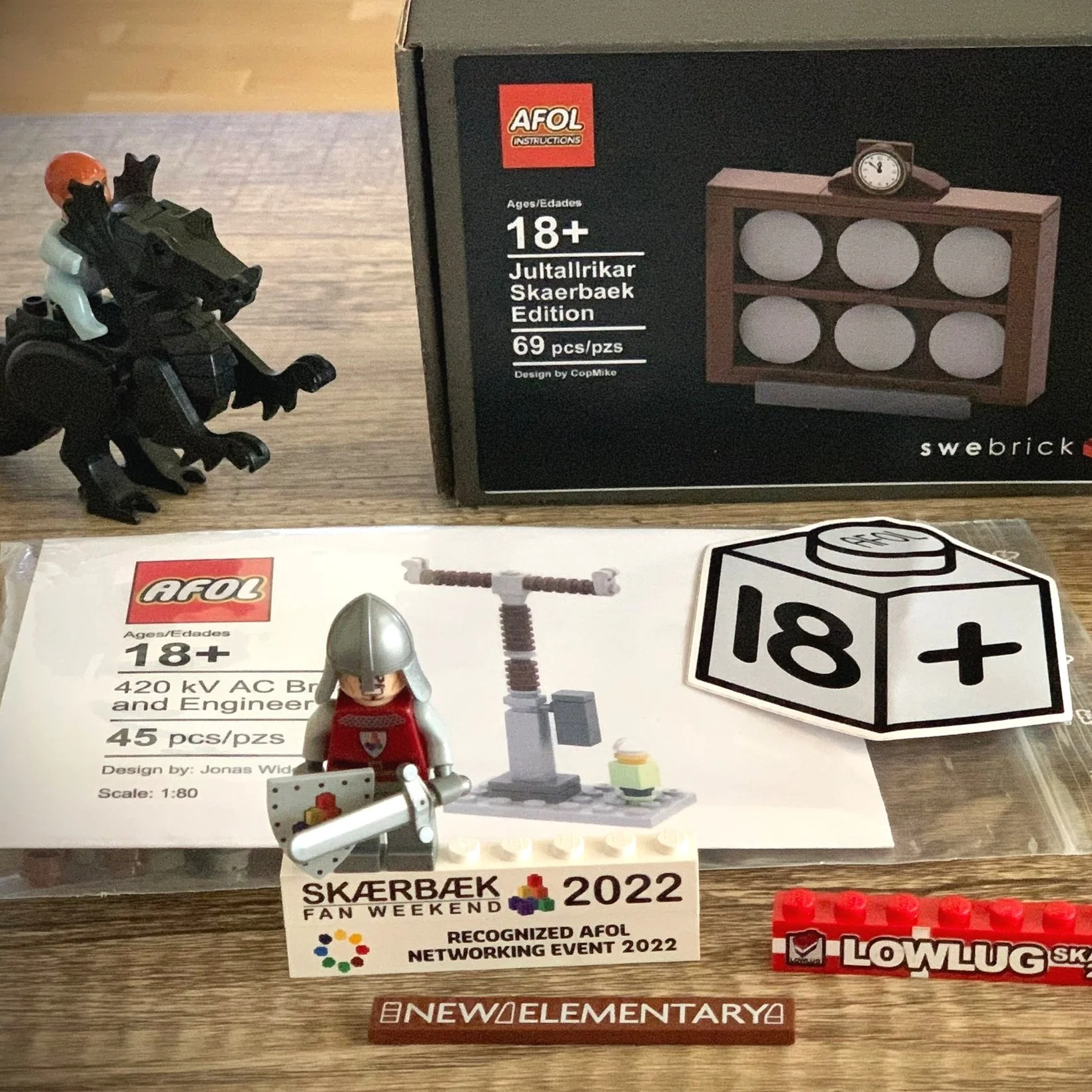Ghost Peppers Are Hot, Pepper’s Ghost Is Cool!
/With Halloween fast approaching and to celebrate Disney’s Haunted Mansion ride (and film), let’s reflect on how to create Pepper’s Ghost effect in LEGO.
What Is Pepper’s Ghost?
Pepper’s Ghost is an illusion technique for making spectral images appear on stage and screen. It was popularized by John Henry Pepper in 1862 (Pepper's Ghost). The illusion works by creating a reflection on a clear surface. The clear surface allows for physical objects and actors to appear to interact (or not) with the ghostly image. The key elements of creating the illusion are as follows:
Having a secret chamber out of the viewer’s line of sight.
The aforementioned clear reflecting medium that the viewer can’t see.
And the ability to illuminate and darken the secret chamber.
When objects in the darkened secret room are illuminated, a reflection is made on the clear medium. Unlike on a mirror with a silvered back (or black LEGO in your own pictures), the clear medium allows some light to pass through and some reflected. This provides a ghostly image.
Here we have a very brightly lit (Go Go Gadget 200 Watt Equivalent bulb!) classic airport worker. You can see the natural reflectiveness of the dark grey bricks behind the worker, but the ghostly image of the worker is seen in the viewable area. The overhead shot shows the empty room with the ghost and the path the light rays take.
The lead image of the ghost and the ghostly pepper above better shows the effect. The double image in the ghost pepper is likely due to the thickness of the panel, getting a reflection on both the front and rear sides of the panel. This picture was taken much closer than the airport worker. (We could get into refraction, reflection, and other fun optics topics, and spend some time talking about Newton which would lead to a conversation about0 wave physics and the particle duality of light, but that would be a topic for Nerd.com, not BrickNerd.
It’s possible you’ve seen Pepper’s Ghost before and not realized it. The most famous example is The Haunted Mansion at Disneyland which uses Pepper’s Ghost illusions. Many haunted houses and theme parks make use of them, too. I see my living room light fixture floating in my backyard all the time as I pass my glass back doors! A few years ago when dead musicians would show up via “hologram” at various music festivals, that was via Pepper’s Ghost. LEGO YouTuber Brick Science demonstrates the effect in this video.
I’m not the first AFOL to play with Pepper’s ghost, either. I did some deep Flickr digging, and found Jordan Schwartz/Sir Nadroj and Alex Eylar experimented with Pepper’s Ghost, too! Patrick Higins built a full-on Haunted Mansion dining room scene utilizing the trick.
Pepper’s Force Ghost
So how did playing with this illusion come about? I run the somewhat bi-monthly build contest for my LUG. We had quite a few light bricks that one of the officers suggested we use in a seed part contest (ours were red but yellow light bricks were also allowed). I came up with the idea of a Pepper’s Ghost MOC as a potential entry. Alas, I didn’t finish it in time and didn’t make the meeting, so entering it in the contest didn’t work out, but it’s a sufficiently nerdy effect to write up for BrickNerd!
Pepper’s Ghost Theater box
I first built the demo above to prove the concept. Then I moved on to a story. What would work with red light for storytelling? Hmm. Red light… SABERS! Ah, a Star Wars MOC! Perhaps a Jedi being troubled by visions of the Dark Side! With the story in hand, figs were assembled, and building began. The scene was going to be a water-front Jedi temple near some cliffs. This setting was to provide a narrow focused view. I built the temple front on a removable assembly as I knew a lot of tweaking would be needed to get the mechanisms and lighting working correctly.
See Visions through the force you may!
This is a project about controlling where the light goes. Too much reflection and the image is washed out. Lights behind the clear panels also wash out the image, but in this case it was chosen for effect. Villains had to be illuminated without backgrounds, and so on. A lot like setting up for a photo shoot!
Dark Side Villains lit with bell crank mechanism on lower right
The two Dark Side villains would be off to the right side, out of view. This makes the outside of the MOC a little boring, but this build is more about demonstrating the technique. The light bricks are internal to the build with the MOC being enclosed. I felt that illuminating the phantom villains from underneath would add more menace. Thus this build became not just about lighting but mechanisms for operating the light bricks.
I’m particularly proud of the bell crank mechanism that turns the input about 135˚. It isn’t very complicated, but it took some work to get it right. As the villain in the back had more forward lighting, I had to work to mitigate some of the light. A black “log wall” panel was used to break up the reflections as it was blocking some of the light source. Overall I’m pleased with the effect!
Keys to Implementing Pepper’s Ghost
I learned a few things that could be improved upon for future attempts:
The sight line of the viewer is critical. My small 6x5 panels require the viewer’s eyes to be in the right spot for the effect to work. A non-purist glass or clear plastic reflecting surface would have been better. A non-LEGO solution is likely to be thinner and potentially more optically clear.
Ambient lighting will have an effect; room lights can easily wash out the reflection.
LEGO elements are naturally glossy; this provides the potential for reflected light, which depending on the effect you’re going for – a whole ghostly room or just a figure – may need black cloth, other less reflective material, or a different space. Light intensity is an inverse square law relationship so the further away the light source, the more brightness is lost—double the distance and get 25% brightness. We are also dealing with reflections that work as a doubling of intensity.
Dealing with the reflections again, the farther the object is, the smaller it will be. If you want your minifigures to appear the same size, you need to work somewhat close.
My reflection chambers were just to the side and not elegantly hidden. Placing them beneath can also work to hide the secret chamber.
Have fun and experiment!
the Temple backlighting reduces the effect but adds depth to the illusion
Have you ever experimented with light reflection in your MOCs? Do you find the ghostly images unsettling? Leave your thoughts in the comments below.
Do you want to help BrickNerd continue publishing articles like this one? Become a top patron like Charlie Stephens, Marc & Liz Puleo, Paige Mueller, Rob Klingberg from Brickstuff, John & Joshua Hanlon from Beyond the Brick, Megan Lum, Andy Price, John A., Lukas Kurth from StoneWars, Wayne Tyler, LeAnna Taylor, Monica Innis, and Dan Church to show your support, get early access, exclusive swag and more.

























